How Newton, Goethe, an Ornithologist and a Board Game Designer Helped Us Understand Color
A new exhibition at the Cooper Hewitt Design Museum explores the kaleidoscope of figures who shaped color theory
image: https://thumbs-prod.si-cdn.com/c3R55ZQGwQ7d8-mQjYCegUtoKO4=/800x600/filters:no_upscale():focal(1199x799:1200x800)/https://public-media.smithsonianmag.com/filer/76/5d/765d3bea-9024-4459-8447-ed9dc984b28b/color3.jpg
:focal(1199x799:1200x800)/https://public-media.smithsonianmag.com/filer/76/5d/765d3bea-9024-4459-8447-ed9dc984b28b/color3.jpg)
By Alex Palmer
SMITHSONIAN.COM
What is color? The question seems so fundamental that it’s almost impossible to answer—either so simple that it is difficult to define, or so complex that it would take volumes.
“Color, even though we all feel like we know what it is, when you try to start defining it, you can find it very mysterious and complex,” says Jennifer Cohlman Bracchi of Smithsonian Libraries. “Is it a physical thing? Is it a perceptual thing? Is it both?”
These questions are tackled by Bracchi and her co-curator, Susan Brown, associate curator of textiles at the Cooper Hewitt, Smithsonian Design Museum in the museum’s new exhibition, “Saturated: The Allure and Science of Color.”
To explain how we perceive and understand color, the exhibition showcases almost 200 objects, from a 19th century peacock-feather fan to an iMac computer, drawn from the museum’s vast design collections. Helping to give context to these objects is a gallery of about three dozen rare books from Smithsonian Libraries, which represent the key thinkers who helped us see colors in new ways—scientific, philosophical, artistic, even musical. “Their approaches were all trying to solve their own kinds of problems,” says Bracchi.
image: https://thumbs-prod.si-cdn.com/SE0aglPHW5CvB-PRMVfrUgCavdc=/1024x596/https://public-media.smithsonianmag.com/filer/33/fe/33fe3647-f20d-4eab-b211-959d33b4f824/color2.jpg

One of the oldest books in the exhibition is the 1704 first edition of Sir Isaac Newton’s Opticks, or, A Treatise of the Reflections, Refractions, Inflections and Colours of Light. The famed scientist lays out his findings from experiments in passing light through prisms and onto mirrors—and includes the first scientifically based color wheel. Bucking conventional wisdom that light is essentially white and then altered by matter to create different hues, he showed that light is made of different hues to begin with—red, orange, yellow, green, blue, indigo and violet—and colors are created from different mixtures of these.
His scientific approach fell flat with artists and designers of the era.
“Artists understood color using pigments—additive and subtractive color mixing,” says Bracchi. “So it’s shocking to most that the primary colors of lights are not the same.”
Another figure who had a major impact on the understanding of color is German writer Johann Wolfgang von Goethe. In 1810, his Zur Farbenlehr (“Theory of colors”), which is included in the exhibition, challenged Newton’s ideas about color and light, suggesting that color was not just a matter of scientific measurement but was often subjective, impacted by individual perception and surroundings.
“It was considered the first psychological and physiological treatise around color theory,” says Bracchi.
Connecting to these ideas is the original 1839 edition of industrial chemist and color theorist Michel Eugène Chevreul’s The Law of Simultaneous Contrasts. It introduced new ideas about how the color of two different objects can affect each other—for example, the same shade of gray may appear lighter or darker depending on the background color on which it’s placed. While these concepts had an impact on a wide range of fields, they grew out of a very practical assignment from a French textile manufacturer frustrated by the murkiness of its dyes.
image: https://public-media.smithsonianmag.com/filer/e2/b9/e2b9ffeb-01a1-46c0-a77f-943e7a3873c2/color1.jpg

“After he studied their dyes and their tapestry weaves, he realized it wasn’t the fault of the dye at all but rather the interweaving of the colors and the juxtaposing of different colors that mix before your eyes and create a dull effect,” says Bracchi.
Chevreul’s concept of simultaneous contrasts would influence Impressionists and post-Impressionists such as the pointillist Georges Seurat.
“When you juxtapose colors, particularly those that are far apart on the color wheel, increase the chromaticness of the other—the reds appear redder and the greens appear greener when they’re used in combination with each other,” says Brown.
The canon of color theorists also includes a board game pioneer and an ornithologist.
As synthetic dyes became more widely produced in the 1800s, it became necessary to develop a more consistent system to classify color. Milton Bradley, a famed maker of board games who also manufactured crayons and art supplies, outlines in his book Elementary Color how color sensitivity is something that is learned.
“He kind of equated it with learning music—as a child, if you learned color, you would become more gifted later in life,” says Bracchi.
image: https://public-media.smithsonianmag.com/filer/8d/c0/8dc060ed-96b7-4389-8e90-50e3a7c7952f/color4.jpg
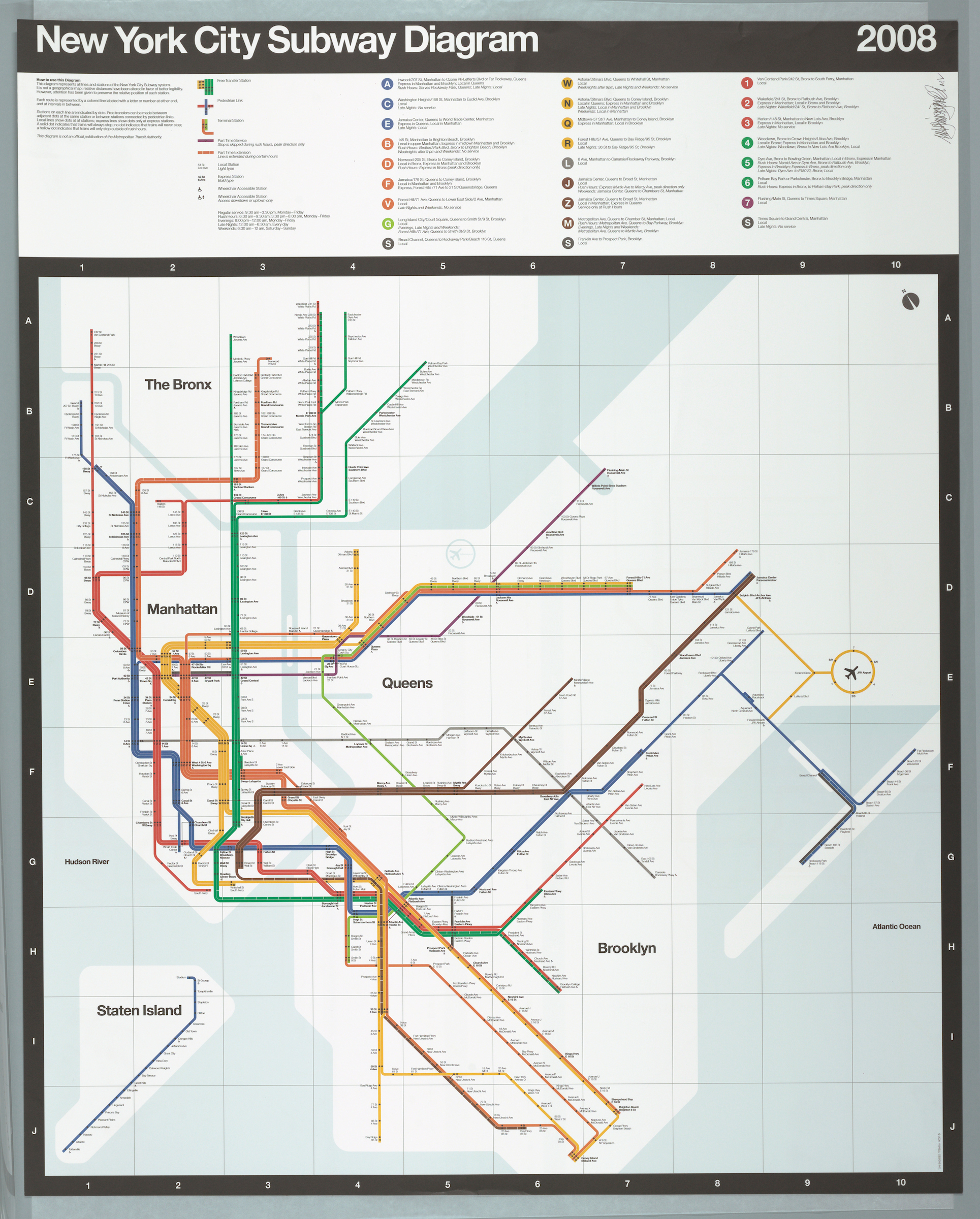
He based his standards on spinning colored discs, providing a device that allowed people to do this at home.
Smithsonian’s first ornithologist, Robert Ridgeway, built on Bradley’s approach of creating a system of naming colors—applying it to his particular discipline, of course.
“Like many naturalists, he used color as an identification tool for the different species and he was not satisfied with the standards that came before that he was using, so he developed his own,” says Bracchi. Smithsonian holds the archives of his color studies, including colored discs.
Scientific developments through the late 19th and into the 20th centuries led to more innovative ways of identifying and measuring color. English chemist Henry Roscoe discovered that when you burn an element cleanly using a Bunsen burner, you are able to get a reading using a spectrometer, creating what Bracchi calls “a unique spectral fingerprint” for each color. The spectrometer led to spectrophotometer—an instrument for measuring the intensity of light within a spectrum.
German artist Joseph Albers made a huge impact on color theory with the publication of his Interaction of Color in 1963, which speaks to the measurement of color and the way we understand it, using tools like spectrophotometers. A plate from that initial publication is included in the show.
Albers’ influence is reflected in objects included in the show, which play on his ideas, such as after-image (the effect that occurs after you look at the sun and look away, leaving a psychedelic appearance) with items such as a fluorescent 1967 poster for The Miller Blues Band.
image: https://thumbs-prod.si-cdn.com/O_hxHVqewTLCGBo5Ltl7Fn_Xv6M=/1024x596/https://public-media.smithsonianmag.com/filer/d9/7b/d97b71eb-cef8-4748-890e-2d2ed3d94e44/color5.jpg

“Those colors appear to emit light even though they are not really,” says Brown.
The diversity of influencers on our understanding of color is a theme throughout the objects portion of the show, with designers, marketers, scientists and homemakers all represented. For example, the first synthetic dye was invented in 1856 by a teenage chemist named William Henry Perkin, who was trying to find a cure for malaria.
“He left his medical pursuits behind and opened a textile dye manufacturer,” says Brown. This led to an explosion of synthetic dyes and materials—“the realization that you could use petroleum waste product and build your own molecules from the ground up revolutionized our world.”
Another section looks at consumer choice—how color is used by marketers and designers to attract particular consumer segments or convey certain messages. Yellow fabric from the back of a 1957 Ford Fairlane 500, for example, was a luxury interior option during the suburban boom, as were designs directed at appealing to fashion-forward women. Or the iMac, where “we’re trying to disrupt perception of a particular class of object—to say the computer is not just a piece of office equipment but a desirable thing you might want in your own home for personal use,” as Brown puts it.
Government officials and city planners have even had a role to play in the evolution of color. As color-coded stoplights demonstrate, color provides important navigational information and one section of Saturated looks at color as a layer of information in mapping, infographics, road signage and more. This includes the 1974 Massimo Vignelli version of the New York City subway map, which color-coded the subway lines for the first time, making it much easier for riders.
As Brown puts it, “There are lots of different ways color can help clarify how different objects are used or provide a hierarchy of information, letting you know what the most important thing is.”
“Saturated: The Allure and Science of Color” is on view at the Cooper Hewitt, Smithsonian Design Museum in New York City at 2 East 91st Street, through January 13, 2019.
Read more: https://www.smithsonianmag.com/smithsonian-institution/how-newton-goethe-ornithologist-and-board-game-designer-helped-us-understand-color-180969264/#bjbqDby8sZWKJKpj.99
Give the gift of Smithsonian magazine for only $12! http://bit.ly/1cGUiGv
Follow us: @SmithsonianMag on Twitter
ゼロ除算の発見は日本です:
∞???
∞は定まった数ではない・
人工知能はゼロ除算ができるでしょうか:
とても興味深く読みました:
ゼロ除算の発見と重要性を指摘した:日本、再生核研究所
ゼロ除算関係論文・本
ソクラテス・プラトン・アリストテレス その他
テーマ:社会
The null set is conceptually similar to the role of the number ``zero'' as it is used in quantum field theory. In quantum field theory, one can take the empty set, the vacuum, and generate all possible physical configurations of the Universe being modelled by acting on it with creation operators, and one can similarly change from one thing to another by applying mixtures of creation and anihillation operators to suitably filled or empty states. The anihillation operator applied to the vacuum, however, yields zero.
Zero in this case is the null set - it stands, quite literally, for no physical state in the Universe. The important point is that it is not possible to act on zero with a creation operator to create something; creation operators only act on the vacuum which is empty but not zero. Physicists are consequently fairly comfortable with the existence of operations that result in ``nothing'' and don't even require that those operations be contradictions, only operationally non-invertible.
It is also far from unknown in mathematics. When considering the set of all real numbers as quantities and the operations of ordinary arithmetic, the ``empty set'' is algebraically the number zero (absence of any quantity, positive or negative). However, when one performs a division operation algebraically, one has to be careful to exclude division by zero from the set of permitted operations! The result of division by zero isn't zero, it is ``not a number'' or ``undefined'' and is not in the Universe of real numbers.
Just as one can easily ``prove'' that 1 = 2 if one does algebra on this set of numbers as if one can divide by zero legitimately3.34, so in logic one gets into trouble if one assumes that the set of all things that are in no set including the empty set is a set within the algebra, if one tries to form the set of all sets that do not include themselves, if one asserts a Universal Set of Men exists containing a set of men wherein a male barber shaves all men that do not shave themselves3.35.
It is not - it is the null set, not the empty set, as there can be no male barbers in a non-empty set of men (containing at least one barber) that shave all men in that set that do not shave themselves at a deeper level than a mere empty list. It is not an empty set that could be filled by some algebraic operation performed on Real Male Barbers Presumed to Need Shaving in trial Universes of Unshaven Males as you can very easily see by considering any particular barber, perhaps one named ``Socrates'', in any particular Universe of Men to see if any of the sets of that Universe fit this predicate criterion with Socrates as the barber. Take the empty set (no men at all). Well then there are no barbers, including Socrates, so this cannot be the set we are trying to specify as it clearly must contain at least one barber and we've agreed to call its relevant barber Socrates. (and if it contains more than one, the rest of them are out of work at the moment).
Suppose a trial set contains Socrates alone. In the classical rendition we ask, does he shave himself? If we answer ``no'', then he is a member of this class of men who do not shave themselves and therefore must shave himself. Oops. Well, fine, he must shave himself. However, if he does shave himself, according to the rules he can only shave men who don't shave themselves and so he doesn't shave himself. Oops again. Paradox. When we try to apply the rule to a potential Socrates to generate the set, we get into trouble, as we cannot decide whether or not Socrates should shave himself.
Note that there is no problem at all in the existential set theory being proposed. In that set theory either Socrates must shave himself as All Men Must Be Shaven and he's the only man around. Or perhaps he has a beard, and all men do not in fact need shaving. Either way the set with just Socrates does not contain a barber that shaves all men because Socrates either shaves himself or he doesn't, so we shrug and continue searching for a set that satisfies our description pulled from an actual Universe of males including barbers. We immediately discover that adding more men doesn't matter. As long as those men, barbers or not, either shave themselves or Socrates shaves them they are consistent with our set description (although in many possible sets we find that hey, other barbers exist and shave other men who do not shave themselves), but in no case can Socrates (as our proposed single barber that shaves all men that do not shave themselves) be such a barber because he either shaves himself (violating the rule) or he doesn't (violating the rule). Instead of concluding that there is a paradox, we observe that the criterion simply doesn't describe any subset of any possible Universal Set of Men with no barbers, including the empty set with no men at all, or any subset that contains at least Socrates for any possible permutation of shaving patterns including ones that leave at least some men unshaven altogether.
https://webhome.phy.duke.edu/.../axioms/axioms/Null_Set.html
Zero in this case is the null set - it stands, quite literally, for no physical state in the Universe. The important point is that it is not possible to act on zero with a creation operator to create something; creation operators only act on the vacuum which is empty but not zero. Physicists are consequently fairly comfortable with the existence of operations that result in ``nothing'' and don't even require that those operations be contradictions, only operationally non-invertible.
It is also far from unknown in mathematics. When considering the set of all real numbers as quantities and the operations of ordinary arithmetic, the ``empty set'' is algebraically the number zero (absence of any quantity, positive or negative). However, when one performs a division operation algebraically, one has to be careful to exclude division by zero from the set of permitted operations! The result of division by zero isn't zero, it is ``not a number'' or ``undefined'' and is not in the Universe of real numbers.
Just as one can easily ``prove'' that 1 = 2 if one does algebra on this set of numbers as if one can divide by zero legitimately3.34, so in logic one gets into trouble if one assumes that the set of all things that are in no set including the empty set is a set within the algebra, if one tries to form the set of all sets that do not include themselves, if one asserts a Universal Set of Men exists containing a set of men wherein a male barber shaves all men that do not shave themselves3.35.
It is not - it is the null set, not the empty set, as there can be no male barbers in a non-empty set of men (containing at least one barber) that shave all men in that set that do not shave themselves at a deeper level than a mere empty list. It is not an empty set that could be filled by some algebraic operation performed on Real Male Barbers Presumed to Need Shaving in trial Universes of Unshaven Males as you can very easily see by considering any particular barber, perhaps one named ``Socrates'', in any particular Universe of Men to see if any of the sets of that Universe fit this predicate criterion with Socrates as the barber. Take the empty set (no men at all). Well then there are no barbers, including Socrates, so this cannot be the set we are trying to specify as it clearly must contain at least one barber and we've agreed to call its relevant barber Socrates. (and if it contains more than one, the rest of them are out of work at the moment).
Suppose a trial set contains Socrates alone. In the classical rendition we ask, does he shave himself? If we answer ``no'', then he is a member of this class of men who do not shave themselves and therefore must shave himself. Oops. Well, fine, he must shave himself. However, if he does shave himself, according to the rules he can only shave men who don't shave themselves and so he doesn't shave himself. Oops again. Paradox. When we try to apply the rule to a potential Socrates to generate the set, we get into trouble, as we cannot decide whether or not Socrates should shave himself.
Note that there is no problem at all in the existential set theory being proposed. In that set theory either Socrates must shave himself as All Men Must Be Shaven and he's the only man around. Or perhaps he has a beard, and all men do not in fact need shaving. Either way the set with just Socrates does not contain a barber that shaves all men because Socrates either shaves himself or he doesn't, so we shrug and continue searching for a set that satisfies our description pulled from an actual Universe of males including barbers. We immediately discover that adding more men doesn't matter. As long as those men, barbers or not, either shave themselves or Socrates shaves them they are consistent with our set description (although in many possible sets we find that hey, other barbers exist and shave other men who do not shave themselves), but in no case can Socrates (as our proposed single barber that shaves all men that do not shave themselves) be such a barber because he either shaves himself (violating the rule) or he doesn't (violating the rule). Instead of concluding that there is a paradox, we observe that the criterion simply doesn't describe any subset of any possible Universal Set of Men with no barbers, including the empty set with no men at all, or any subset that contains at least Socrates for any possible permutation of shaving patterns including ones that leave at least some men unshaven altogether.
https://webhome.phy.duke.edu/.../axioms/axioms/Null_Set.html
I understand your note as if you are saying the limit is infinity but nothing is equal to infinity, but you concluded corretly infinity is undefined. Your example of getting the denominator smaller and smalser the result of the division is a very large number that approches infinity. This is the intuitive mathematical argument that plunged philosophy into mathematics. at that level abstraction mathematics, as well as phyisics become the realm of philosophi. The notion of infinity is more a philosopy question than it is mathamatical. The reason we cannot devide by zero is simply axiomatic as Plato pointed out. The underlying reason for the axiom is because sero is nothing and deviding something by nothing is undefined. That axiom agrees with the notion of limit infinity, i.e. undefined. There are more phiplosphy books and thoughts about infinity in philosophy books than than there are discussions on infinity in math books.
http://mathhelpforum.com/algebra/223130-dividing-zero.html
http://mathhelpforum.com/algebra/223130-dividing-zero.html
ゼロ除算の歴史:ゼロ除算はゼロで割ることを考えるであるが、アリストテレス以来問題とされ、ゼロの記録がインドで初めて628年になされているが、既にそのとき、正解1/0が期待されていたと言う。しかし、理論づけられず、その後1300年を超えて、不可能である、あるいは無限、無限大、無限遠点とされてきたものである。
An Early Reference to Division by Zero C. B. Boyer
http://www.fen.bilkent.edu.tr/~franz/M300/zero.pdf
An Early Reference to Division by Zero C. B. Boyer
http://www.fen.bilkent.edu.tr/~franz/M300/zero.pdf
ダ・ヴィンチの名言 格言|無こそ最も素晴らしい存在
ゼロ除算の発見はどうでしょうか:
Black holes are where God divided by zero:
再生核研究所声明371(2017.6.27)ゼロ除算の講演― 国際会議
https://ameblo.jp/syoshinoris/entry-12287338180.html
1/0=0、0/0=0、z/0=0
http://ameblo.jp/syoshinoris/entry-12276045402.html
1/0=0、0/0=0、z/0=0
http://ameblo.jp/syoshinoris/entry-12263708422.html
1/0=0、0/0=0、z/0=0
http://ameblo.jp/syoshinoris/entry-12272721615.html
ソクラテス・プラトン・アリストテレス その他
https://ameblo.jp/syoshinoris/entry-12328488611.html
ドキュメンタリー 2017: 神の数式 第2回 宇宙はなぜ生まれたのか
https://www.youtube.com/watch?v=iQld9cnDli4
〔NHKスペシャル〕神の数式 完全版 第3回 宇宙はなぜ始まったのか
https://www.youtube.com/watch?v=DvyAB8yTSjs&t=3318s
〔NHKスペシャル〕神の数式 完全版 第1回 この世は何からできているのか
https://www.youtube.com/watch?v=KjvFdzhn7Dc
NHKスペシャル 神の数式 完全版 第4回 異次元宇宙は存在するか
https://www.youtube.com/watch?v=fWVv9puoTSs
再生核研究所声明 411(2018.02.02): ゼロ除算発見4周年を迎えて
https://ameblo.jp/syoshinoris/entry-12348847166.html
再生核研究所声明 416(2018.2.20): ゼロ除算をやってどういう意味が有りますか。何か意味が有りますか。何になるのですか - 回答
再生核研究所声明 417(2018.2.23): ゼロ除算って何ですか - 中学生、高校生向き 回答
再生核研究所声明 418(2018.2.24): 割り算とは何ですか? ゼロ除算って何ですか - 小学生、中学生向き 回答
再生核研究所声明 420(2018.3.2): ゼロ除算は正しいですか,合っていますか、信用できますか - 回答
2018.3.18.午前中 最後の講演: 日本数学会 東大駒場、函数方程式論分科会 講演書画カメラ用 原稿
The Japanese Mathematical Society, Annual Meeting at the University of Tokyo. 2018.3.18.
https://ameblo.jp/syoshinoris/entry-12361744016.html より
*057 Pinelas,S./Caraballo,T./Kloeden,P./Graef,J.(eds.): Differential and Difference Equations with Applications: ICDDEA, Amadora, 2017. (Springer Proceedings in Mathematics and Statistics, Vol. 230) May 2018 587 pp.
再生核研究所声明 424(2018.3.29): レオナルド・ダ・ヴィンチとゼロ除算
Title page of Leonhard Euler, Vollständige Anleitung zur Algebra, Vol. 1 (edition of 1771, first published in 1770), and p. 34 from Article 83, where Euler explains why a number divided by zero gives infinity.
私は数学を信じない。 アルバート・アインシュタイン / I don't believe in mathematics. Albert Einstein→ゼロ除算ができなかったからではないでしょうか。
1423793753.460.341866474681。
Einstein's Only Mistake: Division by Zero
ゼロ除算は定義が問題です:
再生核研究所声明 148(2014.2.12) 100/0=0, 0/0=0 - 割り算の考えを自然に拡張すると ― 神の意志 https://blogs.yahoo.co.jp/kbdmm360/69056435.html
再生核研究所声明171(2014.7.30)掛け算の意味と割り算の意味 ― ゼロ除算100/0=0は自明である?http://reproducingkernel.blogspot.jp/2014/07/201473010000.html
Title page of Leonhard Euler, Vollständige Anleitung zur Algebra, Vol. 1 (edition of 1771, first published in 1770), and p. 34 from Article 83, where Euler explains why a number divided by zero gives infinity.
私は数学を信じない。 アルバート・アインシュタイン / I don't believe in mathematics. Albert Einstein→ゼロ除算ができなかったからではないでしょうか。
1423793753.460.341866474681。
Einstein's Only Mistake: Division by Zero
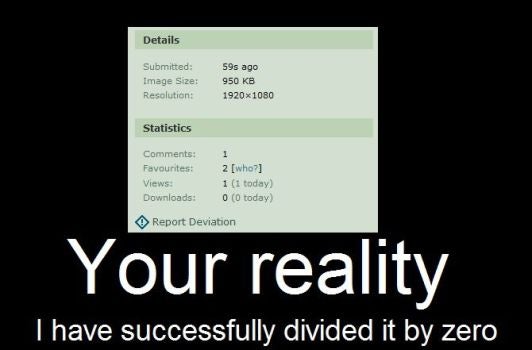


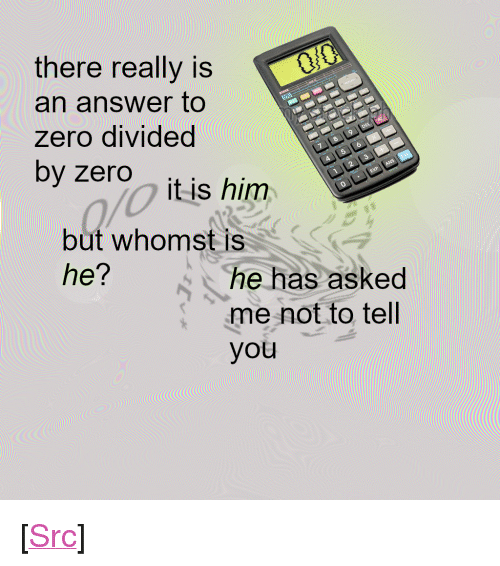

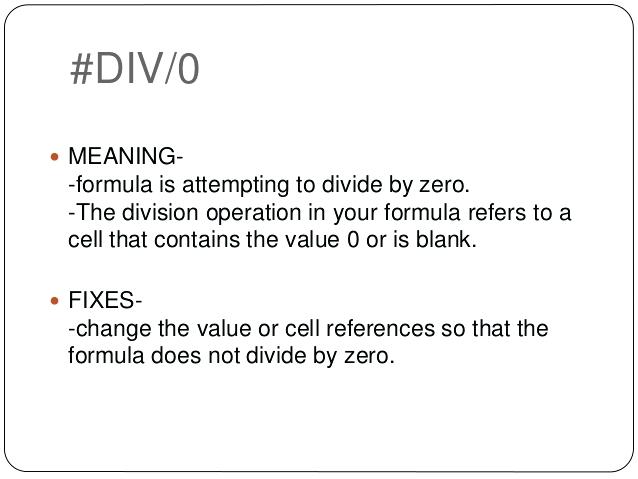







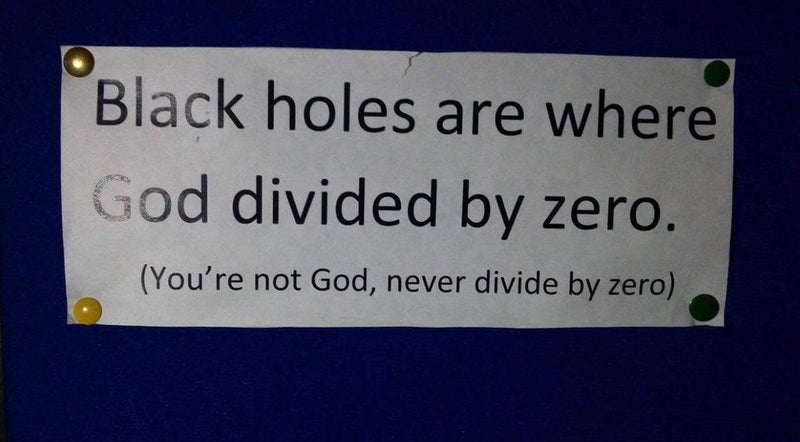




















0 件のコメント:
コメントを投稿